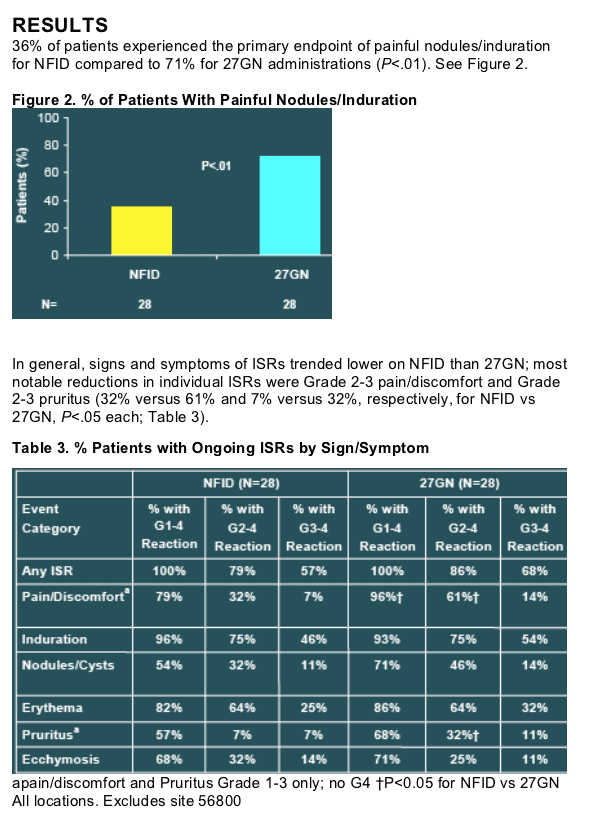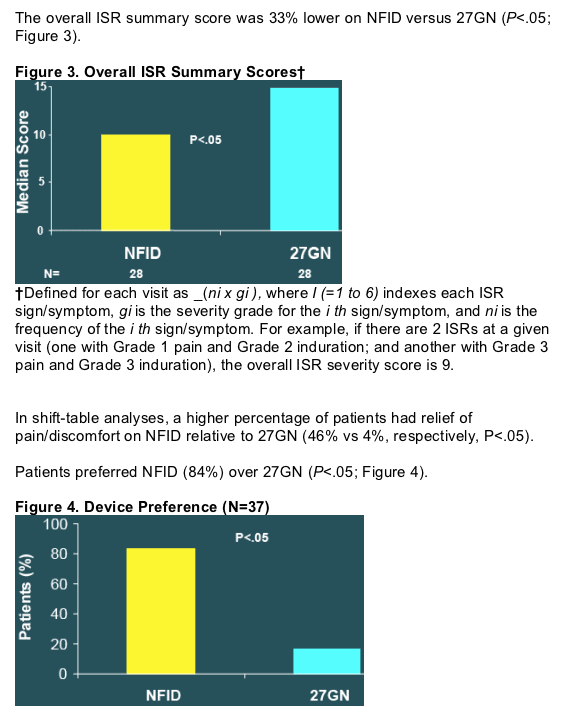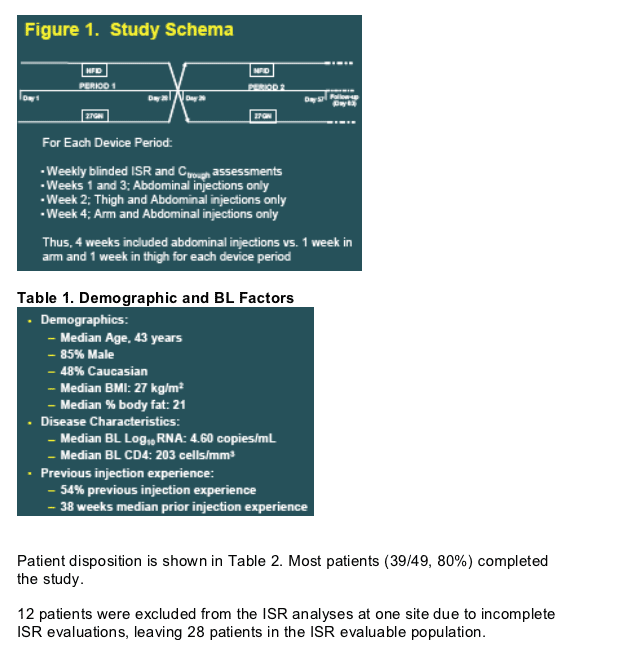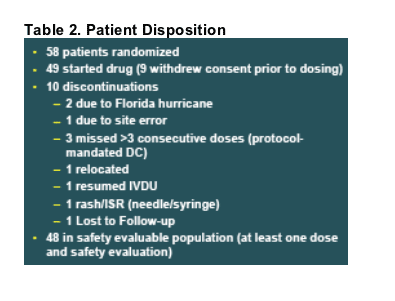 |
 |
 |
| |
Needle-free administration (Biojector) of enfuvirtide significantly reduces incidence of painful injection site reactions: results from a single blind, randomized, controlled study
|
| |
| |
Reported by Jules Levin
46th Annual lCAAC 2006, Sept 27-30,
San Francisco, CA
M GOTTLIEB1, A TRUE2 , R EVANS2, C DEVERTER2 , J THOMMES3 , R DEMASI2 , N GRAHAM2 and the WAND Study Team
1Synergy Hematology Oncology Med. Assoc, Los Angeles, CA, USA 2Trimeris, Inc., Morrisville, NC, USA 3Roche, Nutley, NJ, USA
Authors Concluded:
This controlled study of ENF-naive patients demonstrated that NFID administration of ENF resulted in a substantially lower incidence of painful nodules/induration, was preferred by most patients over standard 27GN, and is generally safe and welltolerated.
Further evaluation of needle-free administration of ENF in different patient populations is ongoing.
Background
Injection site reactions (ISRs) are the most common tolerability issue associated with enfuvirtide (ENF).1
The B2000 (Biojector) needle-free injection device (NFID) achieves equivalent ENF exposure compared to a standard 27G 1/2" needle/syringe (27GN).2
No randomized well-controlled comparison of ISRs between NFID and 27GN has previously been conducted.
STUDY OBJECTIVES
Primary:
To compare patient tolerability based on a primary endpoint of painful nodules/induration with NFID versus 27GN (currently supplied with commercial ENF) during chronic self-administration of ENF.
Secondary:
To determine the adherence, overall satisfaction, and preference for chronic self-administration of ENF between the NFID and 27GN.
To compare the pre-dose steady-state Ctrough levels of ENF following chronic self-administration with the NFID vs. 27GN.


ENF Ctrough (10 - 14 hrs after previous dose)
The mean Ctrough concentrations were similar for NFID and 27GN (2,038 ng/mL vs 2,204 ng/mL); the ratio of least squared means between devices was 0.82 (NFID/27GN); 90% CI (0.61, 1.09).
Several patients at one site were deemed to be nonadherent, and when these patients were excluded from the analysis the resulting ratio of Ctroughs was 0.95 (90% CI: (0.84, 1.08)).
Safety
One device-related serious adverse event (hematoma) was observed during the first week of dosing with NFID. The event resolved after surgical intervention. The patient continued to use NFID during the study and after study completion. No other device-related serious adverse events were observed, and no other adverse events appeared to be related to either injection device.
METHODS
A single-blind crossover study of ENF-naive subjects randomized to self-administer ENF for 4 weeks using NFID versus 4 weeks using 27GN (See Figure 1).
The primary endpoint of ongoing painful ISR (more specifically, painful nodules or induration) was defined as the occurrence of Grade 1-3 pain (>mild tenderness) with associated Grade 3-4 (>25 mm) induration or Grade 2-4 (>20 mm) nodules/cysts.
ISR evaluations were conducted weekly.
An overall ISR summary score encompassing frequency and severity of signs and symptoms of ISRs was derived.
Self-reported preference for each device was evaluated at study completion.
Differences between devices analyzed via McNemar's test for paired dichotomous outcomes and Wilcoxon sign-rank test for continuous outcomes.
Results are presented across all injection locations.
RESULTS
Patient demographic and baseline characteristics are shown in Table 1. The study population had a median BL plasma HIV RNA of 4.60 log10 cp/mL and median BL CD4 cell count of 203 cells/mm3.


|
| |
|
 |
 |
|
|